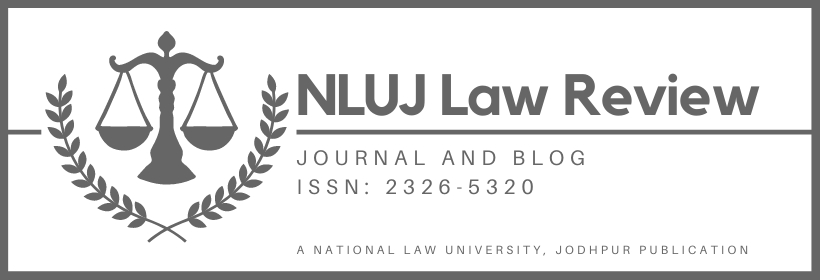Independence is defined in terms of not being subject to an outside source’s influence or control. With regard to the judiciary, this entails being independent of any influence that could lead to a deviation from the duty to uphold the law of the land; including the influence of the State. Judicial independence rests on two factors; first, the independence of the institution as a whole, secured by non-interference of other organs of government; second, the independence of individual actors within it. Each is dependent on the other and guaranteed by constitutional and other safeguards relating to appointments, tenure, and removal. In 2019, the office of the Chief Justice of India (“CJI”) has been brought within the ambit of the Right to Information Act (“RTI Act”). Thus, a major concern is that this measure may impinge on the independence of the judiciary.
This article argues that it will instead bring much-needed accountability and transparency into the process of judicial appointments, as well as the overall functioning of the judiciary. This article is divided into three parts. Part I describes the constitutional and judicial developments ensuring judicial independence. In Part II, the author explores how these developments leave gaps in accountability and transparency. Part III elaborates upon the application of the RTI Act to address these concerns. The author argues that judicial accountability to the people only strengthens public confidence in the judiciary. Hence this is beneficial to, and not against judicial independence. Thus, the RTI Act can prove to be an effective instrument to guarantee the same.
Mechanisms that Ensure Judicial Independence
The independence of the judiciary is considered to be the sine qua non in a democracy. The Black’s Law Dictionary in its definition of “equality before law” includes the requirement of an impartial and independent judiciary.
Article 217(1) of the Constitution of India, 1950 (“The Constitution”) guarantees a fixed tenure to judges of the High Court (“HC”) in place of the previously granted tenure at the pleasure of the Crown. Similarly, judges of the Supreme Court of India (“SC”) also enjoy a fixed tenure by holding office up to the age of sixty-five, under Article 124 (2). Moreover, judges of the HCs and the SC may be removed from office only by impeachment, which requires a special majority in each house of the Parliament as per Articles 124(4), Article 217(b) and Article 218 of the Constitution. It is stipulated under Articles 125, for the Supreme Court and Article 221 for High Courts, that though the Parliament has the power to determine the privileges, allowances and rights of judges, this power cannot be exercised to the disadvantage of one who has already been appointed. Even the oath of office, administered to the judges, in Schedule 3 of the Constitution, espouses the virtue of judicial independence by the words ‘without fear or favour, affection or ill will.’
The major controversy regarding judicial independence has been linked to the appointment of judges which has been comprehensively dealt with in the Three Judges Cases. In the case of S.P. Gupta v. Union of India (“First Judges Case”), the court dealt with the interpretation of the word ‘consultation’ in Articles 217 and 124 of the Constitution. The question before the court of whether consultation meant concurrence was answered in the negative, allowing the Central Government to act unilaterally, provided there had been an effective consultation of judicial authorities. As a result, the power to appoint judges was vested in the executive. This decision was overruled by the Supreme Court Advocates-on-Record Association v. Union of India case, also known as the Second Judges Case. The court, in this case, upheld the primacy of the judiciary in judicial appointments. However, to give effect to the intention that judicial appointments are not be dominated by the CJI alone, the court created a collegium of three judges to give its recommendations.
This culminated in the Special Reference of 1998, or the Third Judges Case. It led to the expansion of the collegium to the CJI and four senior-most judges of the court. The executive could, with reason, reject the recommendations of the collegium. However, if the said recommendations were reiterated, the appointment had to be made. This process was temporarily amended, but the court struck this amendment down, deeming it to be unconstitutional, in the NJAC case. The NJAC case resulted in a tussle between the collegium and the executive, leading to delays in the finalisation of the former’s recommendations. Eventually, a revised Memorandum of Procedure was agreed upon which, in the case of High Courts also set timelines for the completion of each stage of the appointment process. Recently, the Supreme Court also ruled that once a recommendation is made and reiterated, appointment must be made at the earliest, according to prescribed timelines.
Gaps in Transparency & Accountability in Judicial Functioning
The very introduction of the collegium system was rife with controversy. The court sitting in judgment in its matter, went on to grant the judiciary primacy over judicial appointments, and further created a collegium nowhere envisioned by the Constitution.
Several opinions in the Fourth Judges case acknowledged the many shortcomings of the collegium system. Such as Kurian Joseph, J. agreed with the dissent of Chelameswar, J. to the extent to which he recognised flaws in the collegium system. He found the lack of transparency, accountability, and objectivity under the system to be causing a trust deficit in its credibility. The concerns raised were not new. In fact, they had been considered in the First Judges case itself, where the court held that the secrecy and confidentiality of the judicial appointment process would inevitably make it susceptible to nepotism, and personal or even political biases.
In 2017, Justice Jayant Patel’s transfer to the Allahabad HC, overlooking his seniority which normally would have called for his elevation to the SC, or Chief Justiceship of an HC, invited controversy. This was mirrored in 2019 when Justice Tahilramani resigned in protest at being transferred to the Meghalaya HC from the Madras HC. These are not isolated occurrences. Other instances also include the more recent, midnight transfer of Justice Muralidhar, and the silence on the appointment of Justice Saurabh Kirpal allegedly owing to his sexual orientation.
The absolute lack of transparency in the appointment process also meant that the collegium was not required to justify these transfers. In addition, several judges demoted in this manner were at odds with the political executive. This raised serious doubts on the very independence of the judiciary that the collegium system sought to protect. However, the restricted role of the executive as a result of the Three Judges Cases, places the burden of these transfers on the judiciary itself, moreover the collegium in particular.
The absence of clarity on the appointment criteria, and the overall opacity also lends itself to the lack of diversity in the higher judiciary. As of 2013, Brahmins and forward castes constituted nearly 90 per cent SC judges, with only 10 per cent belonging to Scheduled Castes, Scheduled Tribes and Other Backward Classes. It has been admitted by several members of the higher judiciary that caste considerations play a role in appointments, with the SC, in particular, demonstrating a preference for Brahmin judges. There has been only one Dalit and no female CJI till date. All these, and other indicators are testimony to the fact that the higher judiciary, which has often been described as an ‘old-boys club,’ continues to be so.
Contrary to popular belief, the higher judiciary is no stranger to allegations of corruption and misconduct amidst its ranks. These allegations range from embezzlement, judgments favouring one’s son, the disproportionate accumulation of assets, to the infamous sexual harassment allegations against a sitting CJI. However, the various safeguards instituted by the Constitution to keep the judiciary independent and free of any outside influences also insulate it from any accountability.
While executive decisions are subject to rigorous legislative scrutiny and legislative action is rewarded or punished by the electoral process, no such mechanism exists for the judiciary. The judiciary is largely protected against any adverse actions against it. Further, it has at its disposal, the Contempt of Courts Act, 1971 which defines and allows the Supreme Court and High Courts to punish both civil and criminal contempt. Section 2(c) defines criminal contempt as the publication of any matter, or doing of an act, that scandalises or lowers the authority of any court, or prejudices, interferes with, or obstructs judicial proceedings or the administration of justice, or tends to do any of the above. This provision has been criticised as it expands the scope of contempt from only ‘wilful disobedience’ of the court’s judgment in any form, to any publication or act that it deems to be contemptuous. This assessment is left to the discretion of judges who may choose to punish even valid criticism. Recent instances of contempt actions against Prashant Bhushan, Kunal Kamra and Rachita Taneja for mere tweets and comics indicate the increasing willingness of the judiciary to apply this tool. The only remedy available against transgressions by judges would then be impeachment, which is nearly impossible to achieve without conclusive evidence of serious misconduct.
Therefore, the opacity in judicial appointments and lack of accountability in judicial practice are direct consequences of attempts to ensure its independence. However, such attempts are misguided and based on an ignorance of the interdependence between transparency, accountability, and independence. A lack of transparency and accountability automatically invites questions on the independence of the judiciary. Therefore, there is a need for procedures whereby each enhances the other.
The Application of the RTI Act
A robust information regime under the RTI Act could alleviate the concerns raised about the overall transparency and accountability of the judiciary. The RTI Act, in its preamble itself, declares its objective as ‘To promote transparency and accountability in the working of every public authority.’ The SC has conclusively recognised the right to information as an inseparable part of the fundamental right of freedom of speech and expression. It has also played a proactive role in extending this right to various institutions of democratic participation. For example, in the Union of India v. As & Soacnioatthieorn for Democratic Reforms case, the court held that allegations of widespread corruption were an adequate reason for the disclosure requirements upon electoral candidates. Drawing a parallel from this, it is only right that the judiciary is placed under similar obligations when its integrity is questioned. In the case of Central Public Information Officer, Supreme Court of India v. Subhash Chandra Agarwal (“RTI case”), the court has taken the much-needed step of bringing the office of the CJI under the RTI Act.
To do so, the court relied extensively on the judgment in the First Judges case. Although this judgment was subsequently overturned, the court’s observations with regard to disclosure of communications, and its effect on the candour of the process were upheld in the RTI case. It was observed that it was in the spirit of the freedom of speech and expression that views expressed by judges be debated and even criticised, particularly if such views were bona fide. Moreover, if there was impropriety in a judge’s behaviour, it should face public censure as transparency is a quality that must not be limited to the executive. It was also noted that the sanctity accorded to the secrecy of the process of appointments and transfers was misplaced, and should be discarded with, as and when relevant to judicial proceedings. Following Justice Bhagwati’s approach, the court ruled that there could be no class immunity to the information sought.
The court also analysed the provisions of the RTI Act, ruling that the Supreme Court and the High Courts, having been established by Articles 124(1) and 214 of the Constitution are public authorities as under Section 2(h) of the Act. The office of the CJI, is not distinct from the SC itself, and the office of Chief Justices from their respective High Courts; therefore, they are all public authorities. Further, the information is held by the office of the CJI in its official capacity and not in a fiduciary capacity; thus falling within the ambit of Section 2(j). Lastly, with regard to the exception under clause j of Section 8(1) of the Act, the Information Officer would have to balance the opposing interests in privacy and public interest, but information could not be denied solely on ground of violation of privacy or confidentiality. This has placed the CJI under an obligation to produce information regarding the appointment of judges of the SC and the HCs, as well as a declaration of assets made to the CJI, provided it has some bearing on public interest and is not entirely personal information.
Conclusion
The expansion of the right to information in relation to the CJI’s office has been met with concerns about independence in judicial proceedings. This judicial independence has developed through constitutional provisions and judicial developments. However, as noted above this independence leaves gaps in judicial accountability and transparency. These gaps are characterised by an opaque appointment process, arbitrary transfers, a lack of diversity and unaddressed judicial corruption. These have a direct bearing on the independence of the judiciary. It is proposed that the application of the RTI Act can fill these gaps while preserving and enhancing judicial independence.
First, it is incorrect to aver that asset disclosures and the revelation of confidential discussions between constitutional authorities could invite unwarranted political pressures. It is to be noted, that by the proposed information regime, judges owe accountability not to a political executive, but to the people by virtue of their judicial power. In the NJAC case, the court referred to an article that advocated for the intensification of political considerations when it came to accountability and transparency in the appointment process. Under such a system, the information disclosed to the public would clarify both the judiciary and the executive’s positions on appointments and transfers of judges. This would enable accountability. The judiciary would be forced to exercise its wide-ranging powers with greater caution, so as to preserve people’s faith in its fairness, independence, and impartiality. Moreover, the executive could be directly held responsible by the legislature for any undue influence it exercised over the process.
Second, the RTI Act establishes a system of voluntary disclosures. Therefore, the judiciary must, suo motu, make available as much information as it deems fit. When subject to criticism it could further clarify its position without a citizen having to resort to an action under the RTI Act. The SC had partially adopted this practice since it decided to publish collegium recommendations on its website. Moreover, it extended the scope of this practice by its resolution dated October 3, 2020. This resolution specifically addressed each of the complaints made by the executive in returning the recommendations to the collegium. However, since October 2019, though “collegium resolutions” continue to be available on the SC website, the files contain lists of nominated judges rather than those of all recommendations.
Therefore, what is required is a dedicated effort by the office of the CJI to voluntarily, and continuously disclose as much information as possible to the public. A robust information regime could ensure the same, bring transparency to the appointment process and thereby safeguard judicial independence.



